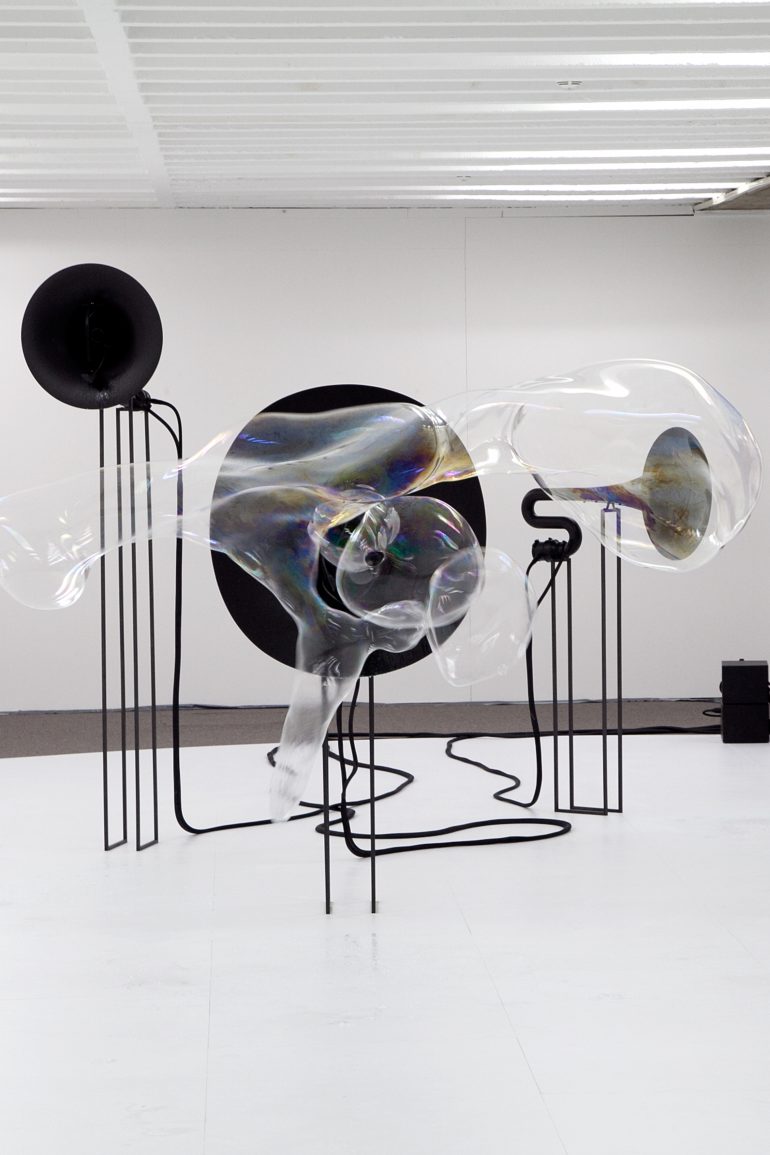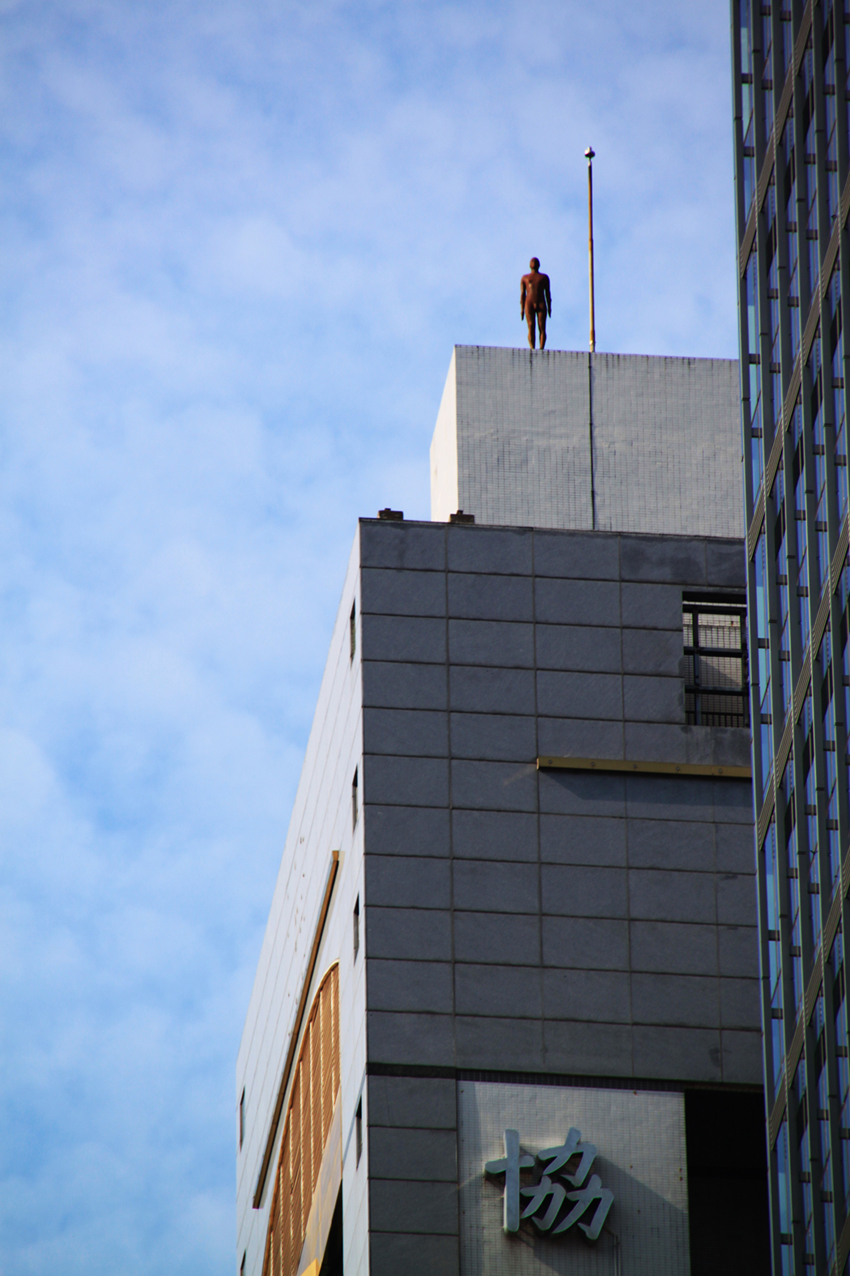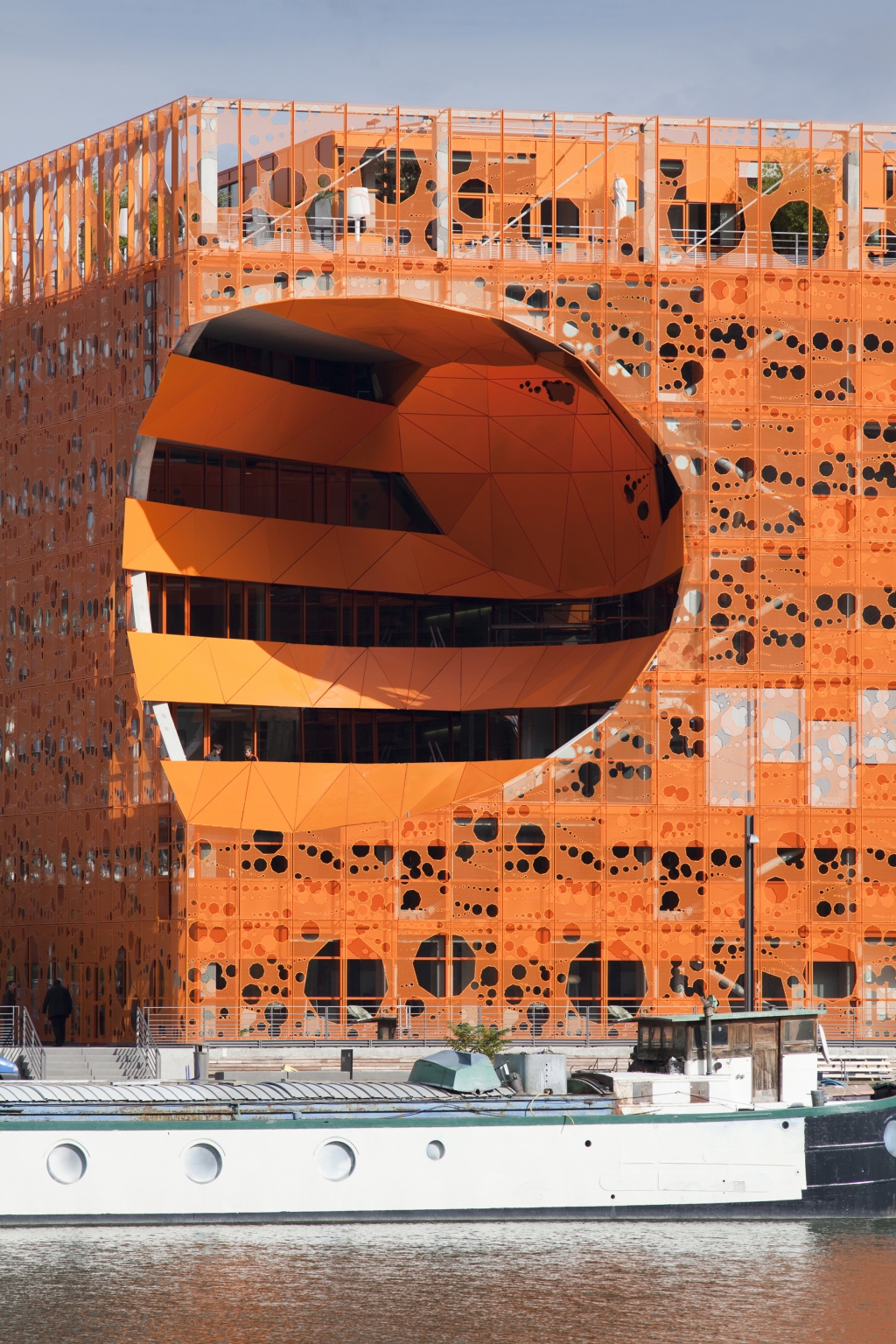SolarSonic
Inspiriert vom alten chinesischen „Bi“, den neolithischen Jadescheiben mit einer zentralen Öffnung, die verwendet wurden, um über das Überschreiten der Erde zum Himmel zu meditieren, besteht “Solarsonic” aus 14 Linsen, die in der äußeren Glasdachstruktur des Terminals aufgehängt sind. Die Linsen – Eine einseitig mit holographischem lichtablenkendem Glas ummantelte Zugringstruktur – ist graduiert und durch 20 horizontale Kabel verbunden, die in einem Torroidmuster gewebt, gespannt und an beiden Enden an Verankerungen befestigt sind. Das gesamte 100 Meter lange Ensemble besteht aus King erinnert an einen segmentierten chinesischen Drachendrachen, der vom Rumpf des SST skaliert wurde. Bei der Entwicklung von Solarsonic wurde King an den Science-Fiction-Autor Sir Arthur Clarks Kurzgeschichte “Wind from the Sun” über ein Raumschiff erinnert, das von der Kraft von angetrieben wurde Sonnenlicht. Diese Methode der Raumfahrt wird Realität. Solarsonic gehört zu einer Reihe chromatischer Skulpturen von King, die für die Interaktion mit der Sonne entwickelt wurden. Die konkave holographische Linse der Skulptur Sie sind so positioniert, dass sie dem südlichen Meridian der Sonne zugewandt sind und nachts beleuchtet werden. Ray King ist ein Künstler, der die natürlichen Phänomene von Licht und Optik als Kunstmedium nutzt. Seit 1976 stellt er seine Arbeiten international aus. Große Installationen wurden in den USA, Europa und Asien in Auftrag gegeben – alle sind ortsspezifisch und vom umgebenden Raum und der Landschaft inspiriert.











